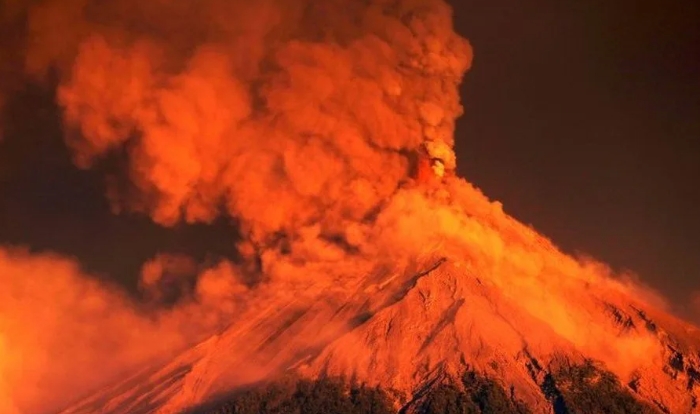Volcanic eruptions are one of the most powerful natural phenomena on Earth. But what causes these explosive events to occur? Let’s take a closer look at the science behind volcanic eruptions.
Magma Chambers: The Source of Volcanic Activity
Beneath the Earth’s surface, there are vast reservoirs of molten rock known as magma chambers. These chambers can be found in areas where the Earth’s tectonic plates meet and interact, such as along the edges of continents or on volcanic islands.
When conditions are right, the magma chambers become pressurized by gases and heat, causing the magma to rise towards the surface. As it moves upwards, the magma can encounter pockets of water or other volatile substances, leading to a build-up of pressure that eventually results in an eruption.
Volcanic Venting: The Release of Lava and Gas
During an eruption, the magma from the chamber is forced out of the volcano through a vent or fissure in the Earth’s crust. This molten rock, known as lava, can flow down the sides of the volcano or shoot into the air as explosive pyroclastic flows.
In addition to lava, volcanic eruptions can also release gases such as sulfur dioxide, carbon dioxide, and water vapor. These gases can have a significant impact on the environment, affecting air quality and contributing to the formation of acid rain.
The Role of Tectonic Plates: Triggering Volcanic Activity
Tectonic plates are large slabs of rock that make up the Earth’s outer shell. When these plates shift and collide, they can create the conditions necessary for volcanic activity to occur.
For example, subduction zones are areas where one tectonic plate is forced beneath another. The melting of the subducted plate generates magma, which can rise to the surface and trigger a volcanic eruption.
Monitoring and Prediction: Understanding Volcanic Activity
Scientists use a variety of tools, such as seismometers, gas sensors, and satellite imagery, to monitor volcanic activity and predict when an eruption might occur. By studying the patterns of seismic activity, gas emissions, and ground deformation, researchers can gain valuable insights into the inner workings of volcanoes.
While it is impossible to prevent volcanic eruptions entirely, understanding the science behind these events can help us better prepare for their potentially devastating impacts. By monitoring and studying volcanic activity, we can work towards developing strategies to mitigate the risks posed by these powerful natural phenomena.

